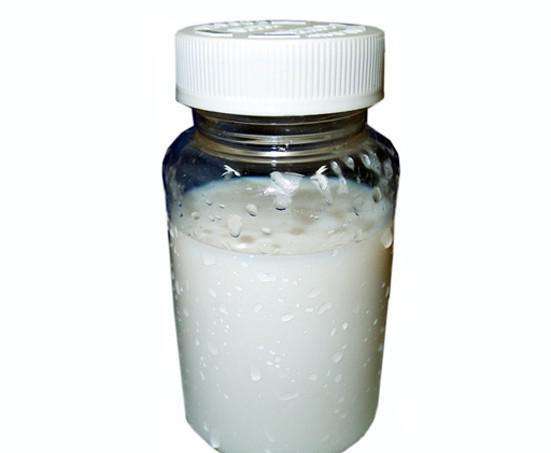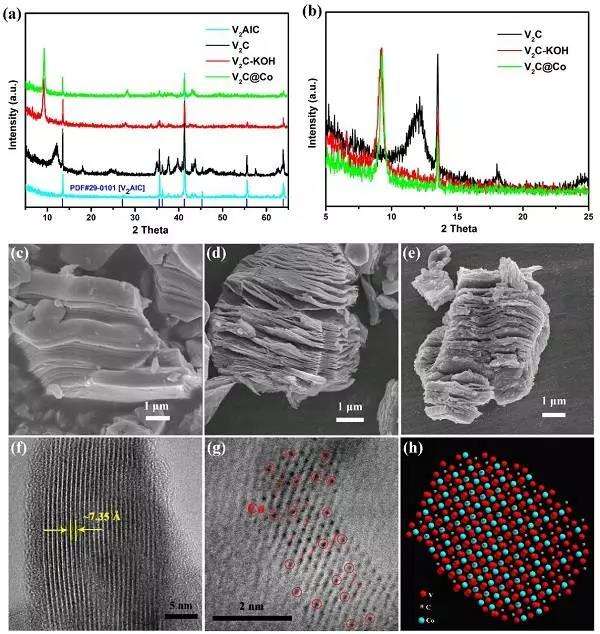V2C-MXenes single-layer V2C colloidal aqueous solution, Nb4C3-MXenes, long-term supply of various scientific research reagents
QQ Academic Group: 1092348845
Detailed
Definition of colloidal aqueous solution: Colloidal solution refers to a solution formed by dispersing a solid particle drug or a polymer compound of a certain size in a solvent. The particle size of the dispersion system is generally between 1 and 100 nanometers. Most of the dispersion medium is water, and a few are non-aqueous solvents.

kind:
Colloids can be divided into lyophilic colloids and lyophobic colloids according to the affinity between the colloidal particles and the dispersion medium. When the dispersion medium is water, they are called hydrophilic colloids and hydrophobic colloids. The system in which colloids are dispersed in a dispersing medium is called a colloidal solution, and a colloidal aqueous solution is more commonly used in Chinese medicine pharmacy.
Hydrocolloid solution
Colloidal compounds (proteins and other polymer compounds) have many hydrophilic groups in their molecular structure and can interact with water molecules. After the particles are hydrated, they are dispersed in water in a molecular state to form a hydrocolloid solution. Such as animal gum (Ejiao, antler, gelatin, bone glue, etc.), aqueous enzymes (pepsin, trypsin, lysozyme, urokinase, etc.) and other protein-containing biochemical agents, cellulose derivatives in plants, natural Polysaccharides, mucoids, gums, etc., artificial dextran, and colloidal solutions formed after contact with water fall into this category. Most of the hydrocolloids are polymer compounds, so the hydrocolloid solution is also called polymer aqueous solution. As the number of non-polar genes increases, the hydrophilic properties of colloids decrease, and the affinity for semi-polar and non-polar solvents increases. When colloidal particles are dispersed in these solvents, the solution formed is called lyophilic colloidal solution Or polymer non-aqueous solution, such as corn mash ethanol solution or acetone solution.
Hydrocolloid solution
Hydrocolloid solution, also known as sol, is a dispersion system formed by multi-molecular aggregated particles (1-100 nm) dispersed in water. The hydration between particles and water is very weak, so there is a more obvious interface between them and water, so the sol is a micro-multiphase dispersion system with agglomeration instability. The surface of the sol particles has a very thin electric double layer structure. This electric double layer structure contributes to the stability of the sol. There are very few hydrocolloids in pharmaceutical dosage forms, but they are often encountered during the preparation of traditional Chinese medicines. For example, during the preparation of the gum, a small amount of alum is added to the gum to precipitate and remove fine solid particles (impurities such as dust with a particle diameter of 1 to 100 nm) in the gum.
Protective colloidal solution
As described above, the hydrocolloid solution has the instability that the colloidal particles tend to agglomerate into large particles and cause precipitation. Adding a certain amount of hydrocolloid solution to the hydrocolloid solution makes the surface of the colloidal particles adsorb a layer of hydrophilic colloid, hinders the mutual contact between the colloidal particles, and increases the stability of the hydrocolloid. This effect is called the protective effect of colloids. Such colloids are called protective colloids. From this point of view, the glue mentioned above is used to make the gum juice. From this point of view, because solid particles will absorb some glue, it can also be considered as a protective colloid. Those who contain gums (gum gum, antlers, etc.) in Chinese medicine decoctions, When the glue is deliquified into the soup, protective colloids may be produced, and the poorly water-soluble ingredients are dispersed in the soup to facilitate **.
Gels and Adhesives
Some hydrocolloid solutions, such as gelatin aqueous solution, gelatin, antler gum and other aqueous solutions, agar solution, etc., are viscous flowing liquids under warm conditions. However, when the temperature is lowered, the polymers dispersed in a chain form a network structure, and the water in the dispersion medium is all contained in the network structure, forming a non-flowing semi-solid substance, called a gel, which forms a gel. This process is called gelation. A 2% gelatin aqueous solution can form a gel at a certain temperature, while gelatin and other aqueous solutions require a higher concentration to form a gel, because part of the collagen is hydrolyzed. When the gel is placed at a proper temperature, it loses the water inside the network structure and forms a solid gel block called a xerogel. The xerogel can dissolve to form a hydrocolloid solution when it encounters water. If the xerogel is pulverized, the pectin becomes faster, and the hydrocolloid solution is formed quickly in warm water. The entire process of the preparation and application of traditional Chinese medicine gels actually dissolves collagen or denatured products in water to form a hydrocolloid solution; it is then concentrated to a certain concentration and left to cool to form a gel; the gel is cut into pieces and dried Dry to make a xerogel.
Thixotropic gum solution
There are a few colloidal solutions, such as a colloidal solution in which aluminum stearate is dispersed in vegetable oil. When standing at a certain temperature, it gradually turns into a semi-solid gel. When shaken, it turns into a colloidal solution that can flow. . This property of colloidal solutions is called thixotropy, and this colloid is called thixotropic gum. Thixotropic gels are sometimes encountered in suspension eye drops or injections.

Related Abstracts: This article describes a simple and convenient technique for preparing colloidal crystals without using any special experimental equipment. We have studied the hydrolysis and condensation reactions of organosiloxane (Si (OR) 4) in ammonium hydroxide and ethanol as media, with particular emphasis on the concentration of ammonium hydroxide, the temperature, and the ethyl orthosilicate (TEOS) Effects on chemical reactions. By particle size characterization, it was found that the particle size is directly proportional to the ammonium hydroxide concentration and inversely proportional to the TEOS concentration. At the same ammonium hydroxide concentration, the temperature is inversely proportional to the particle size. In this paper, silica particles were prepared under different experimental standards, and the repeatability error obtained was less than 12%. In order to obtain different surface chemical properties, organosilanes (phenyl, dodecyl, amino and fluoro) with four different chemical groups are used in the surface silanization reaction. The characterization methods used for synthetic particles are: thermogravimetric analysis (TGA), Fourier transform infrared spectroscopy (FT-IR), and Zeta potential measurement. In this experiment, a close-packed colloidal monolayer film was prepared by an angle method with an inclination angle of 9 °. The effects of the suspension volume, volume fraction, deposition solvent, and particle surface chemistry on it were studied. Finally, this study believes that when the particle diameter of the array is 550 nm, the optimal conditions for the experiment are: use 50 μl of ethanol as the deposition solvent, and the volume fraction after dodecyl modification is 0. 1% suspension of silica particles.
Product Supply List:
Ti3C2-MXenes two-dimensional transition metal carbonitride
Ti2C-MXenes Nanoflakes
Mo3C2-MXenes two-dimensional nanomaterial
Cr2C-MXenes material
V2C-MXenes single layer V2C colloidal aqueous solution
Organ-like Nb4C3-MXenes nanomaterial
Ti2N-Mxenes two-dimensional nanomaterial
Multilayer material organ powder Nb2C-MXenes material
Ta2C-MXenes multilayer sheet material
V4C3-MXenes different shape materials
Ta4C3-MXenes multilayer sheet 2D material
Multilayer perchloric V2C material-MXene
Multilayer perchlorine Ti3C2 material-MXene
Ti3C2 MXene Composite Nano Silver Wire Film
MXene Ti3C2 film
MXene-Ti3C2
Monolayer Ti2SnC colloidal aqueous solution
- Previous: Ti3C2-MXenes two-dimen
- Next: 1


 About us
About us